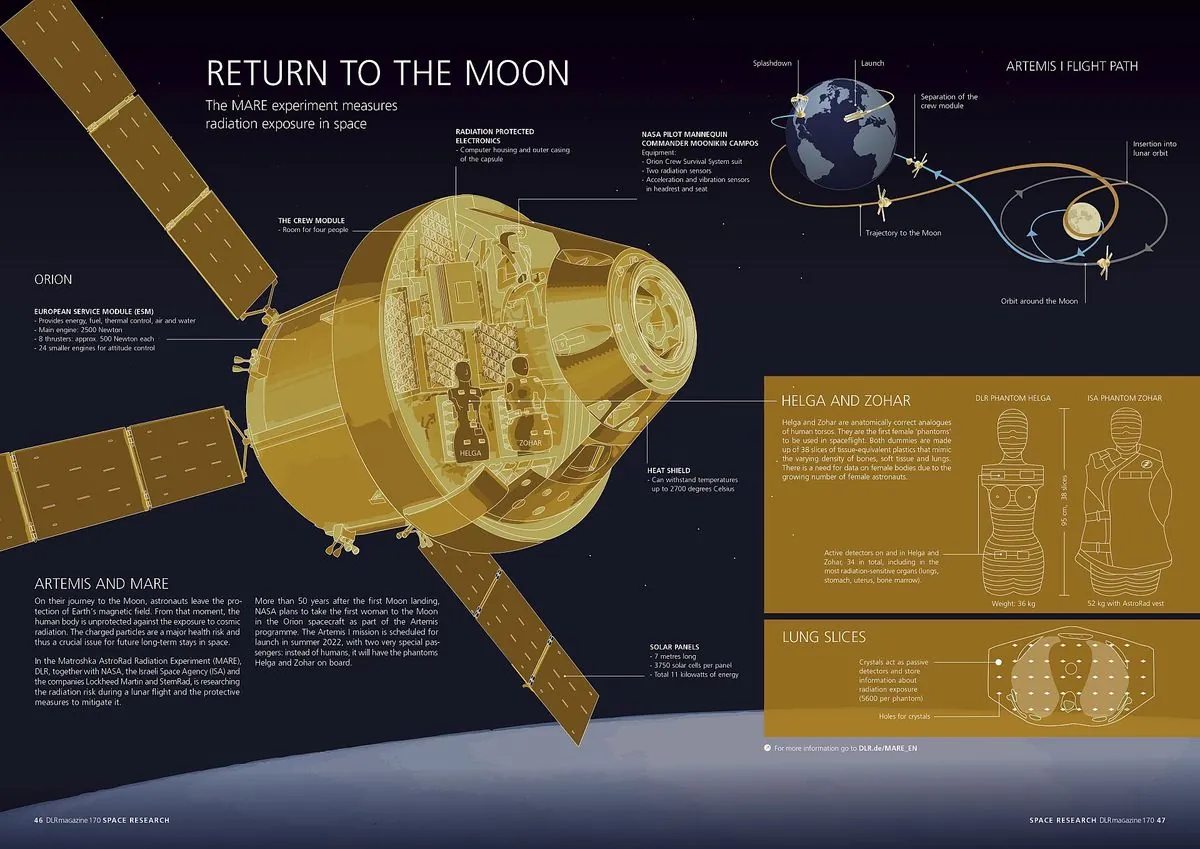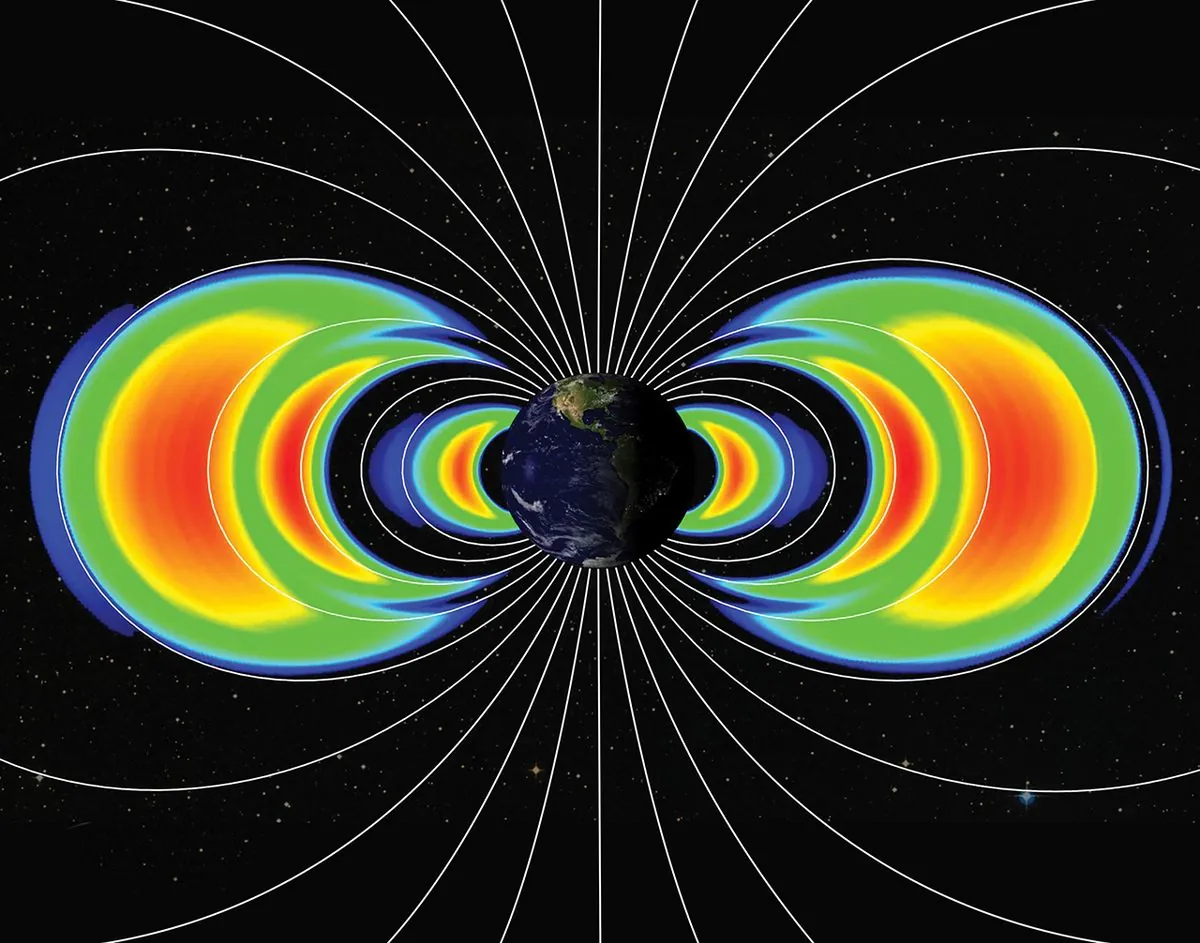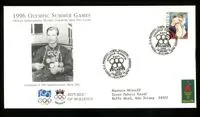NASA's Artemis I Radiation Study Paves Way for Safer Space Travel
NASA's Artemis I mission used mannequins to gather crucial radiation data beyond Earth's magnetic field. The findings will help protect astronauts on future long-term space missions, including to Mars.

NASA's Artemis I mission, completed nearly two years ago, has yielded valuable insights into space radiation exposure, a critical concern for future long-duration space missions. The uncrewed 25-day journey around the moon utilized mannequins named Helga and Zohar to collect data on radiation levels experienced beyond Earth's protective magnetic field.
The Artemis program, which aims to return astronauts to the lunar surface by the end of this decade, serves as a stepping stone for future human exploration of Mars. However, the dangers posed by space radiation remain a significant hurdle to overcome. Galactic cosmic rays and solar flare particles can increase astronauts' risk of radiation sickness, cancer, and other health issues.
Stuart George, a physicist from NASA's Johnson Space Center, explained that Helga and Zohar are sophisticated "radiation phantoms" designed to mimic the human body's response to radiation. These mannequins, representing female bodies due to their higher radiation sensitivity, were equipped with sensors to measure radiation exposure across various organs.
The study revealed that the spacecraft's design played a crucial role in radiation protection. Areas with the most shielding, including a "storm shelter" for astronauts during solar events, provided up to four times more protection than less shielded areas. This validation of the design is crucial for future missions, as noted by radiation physicist Thomas Berger of the German Aerospace Center.
Interestingly, the orientation of the Orion spacecraft during flight significantly affected radiation exposure. When the spacecraft made a 90-degree turn while passing the inner Van Allen belt, radiation exposure dropped by half. This discovery highlights the importance of spacecraft positioning in minimizing radiation risks.

The Van Allen belts, discovered in 1958 by James Van Allen, are regions of intense radiation surrounding Earth. These belts, along with Earth's magnetic field, provide a protective envelope against space radiation. However, as spacecraft venture beyond this shield, the risks increase substantially.
It's worth noting that the Apollo missions remain the only instances where humans have traveled beyond Earth's magnetic field. During those missions, astronauts reported seeing flashes of light caused by cosmic rays hitting their eyes, a phenomenon that underscores the pervasive nature of space radiation.
The Artemis I mission's data showed that exposure to galactic cosmic rays inside the Orion capsule was about 60% lower than measurements from previous uncrewed interplanetary probes. This reduction demonstrates the effectiveness of Orion's radiation shielding design, which is crucial for long-term lunar stays and future Mars missions.
As NASA's Human Research Program continues to study ways to mitigate space radiation risks, water has emerged as one of the best radiation shields for spacecraft. This finding could influence future spacecraft designs, potentially incorporating water storage into radiation protection systems.
The challenges of space radiation extend beyond human health. Cosmic rays can penetrate spacecraft walls and human tissue, potentially damaging DNA and increasing cancer risk. Moreover, space radiation can cause electronic equipment failures, adding another layer of complexity to long-duration missions.
To put the radiation exposure in perspective, astronauts on the International Space Station receive an average dose of about 300 millisieverts (mSv) per year. In contrast, a Mars mission could expose astronauts to up to 700 mSv. These levels far exceed the legal radiation exposure limit of 50 mSv per year for radiation workers on Earth.
As NASA prepares for future Artemis missions and eventual Mars exploration, the data collected from Helga and Zohar will be instrumental in developing better radiation protection strategies. This includes the development of new spacesuits with enhanced radiation shielding and improved spacecraft designs.
The Artemis I mission has provided a wealth of information that will help ensure the safety of astronauts as humanity takes its next giant leaps in space exploration. As we look to the stars, the lessons learned from Helga and Zohar's journey will guide us towards safer and more ambitious space travel.


































